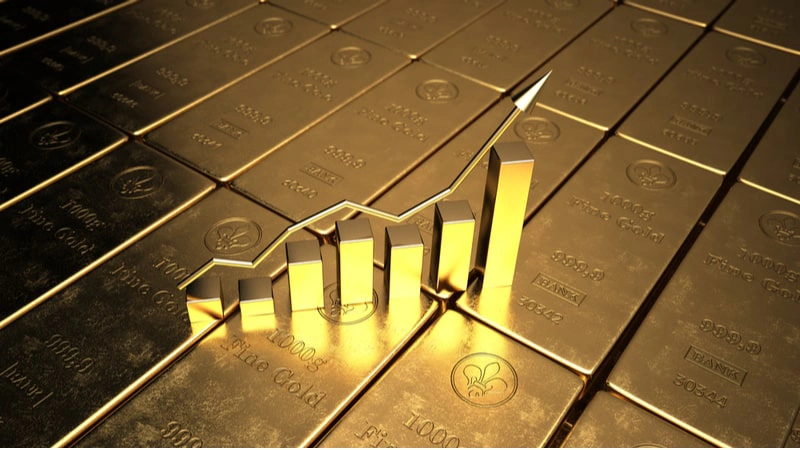Why does gold actually rise or fall?
Last week, gold prices broke through another local low, reaching $1,920.23 per troy ounce at the end of the day on 20 August, and on Monday afternoon they rose to $1,922.28 per troy ounce. For comparison, in July, the precious metal could be bought for $1,985 per troy ounce, and in May – for $2,080. The downward trend continues. As of the morning of 22 August, they dropped to $1900 per ounce and are testing this threshold. Why depends on the price of gold, said Avi Gilbert, founder of ElliottWaveTrader.net. “The Ministry of Finance has chosen the main thing.

I recently read an article in which the authors expect a rally in gold. One of the main arguments they give for the rise is the expectation of a Chinese invasion of Taiwan.
In case this argument doesn’t work, they cited other arguments. So, if China does not invade Taiwan, gold will rise because it continues to be called a safe haven during market volatility/fall.
If that doesn’t work out either, it will rise on expectations of Fed interest rate cuts. If this assumption turns out to be wrong, the authors cited the following possible reason for the rally: increased gold purchases by central banks. In other words, the authors simply cited all the gold rally clichés they had heard.
But all these arguments are actually false. None of these are drivers of gold growth on a historical scale.
Why all these arguments are mythologized
There is no need to reinvent the wheel to disprove the common misconception that gold is a safe haven during market downturns/volatility. Over the past few years, the sideways trends in gold prices have been refuting this claim, as analysts and the media have been constantly repeating: gold has not become a safe haven, and cannot be one by definition.
In 2022, the world faced the greatest inflationary pressure in decades. And how did gold react?” – “For most of 2022, the price of gold was declining. I think this fact finally dispels the myth that gold is a hedge against inflation.
The argument with Fed rates also doesn’t work. About a decade ago, the Fed was not only cutting rates, but also conducting quantitative easing. At that time, every corner was shouting about the rapid growth of gold. And how did it react? Its price went down, and reached almost $1,000 per ounce.
As for the purchase of gold by central banks. Again, if we look at history, we can see that the gold market often (not always) peaked when central banks were actively buying it and bottomed out when central banks were big sellers. I know that this sounds rather illogical, but facts are facts.
Go back many years and look at geopolitical events and what happened to gold prices. The majority of people who are unfamiliar with this will now say that they were growing. But historical facts paint a completely different picture. Therefore, the approximate reaction of gold prices to a hypothetical invasion will be nothing.
I am not saying that gold will not rise if China invades Taiwan at the end of this year. However, the reason for the rally will not be a Chinese invasion. Rather, it will be due to the fact that gold is approaching the extreme of short-term negative sentiment, which will force it to reverse in the opposite direction. Everything is very simple.
